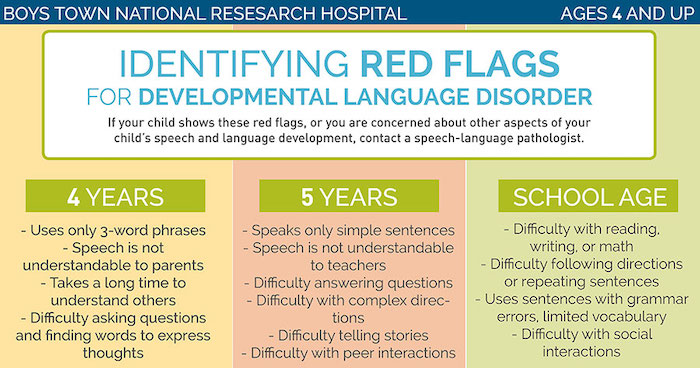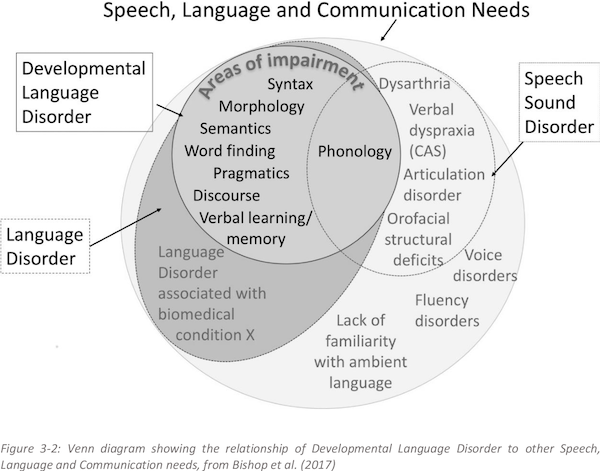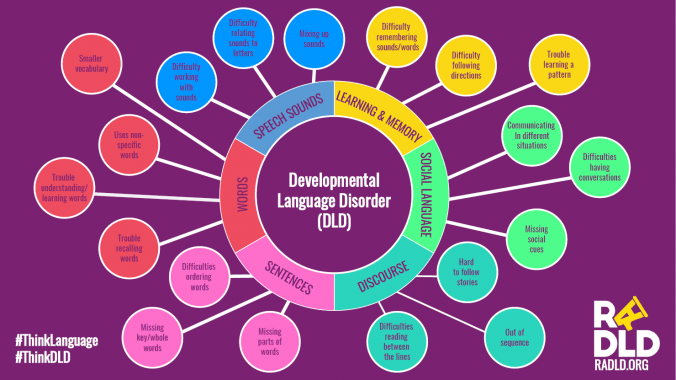Developmental language disorders: A teacher's guide
Developmental language disorders can have a profound effect on a child's education, what positive steps can teachers take in the classroom?


Developmental language disorders can have a profound effect on a child's education, what positive steps can teachers take in the classroom?
Development language disorder (DLD), considered a neurodevelopmental disorder, that falls under speech, language, and communication needs. It is a long-life condition that affects the child in using and understanding language. It is also known as specific language impairment (SLI), speech disorder, speech-language impairment, or expressive-receptive language disorder. All these names come under the umbrella term of a developmental speech disorder.
Children with developmental language difficulties may be at risk of working below their age range level. Children with developmental language difficulties may be struggling with social skills and low educational attainment. The child at the age of 4 has a more stable language ability, therefore the developmental language disorder can be measured accurately at the age of 4. That does not mean that there are no signs of developmental language disorder appearing on the child before age 4 but it is more accurately diagnosed at the age of 4.
Language skills are a vital tool for everyday life communication, school-age children need verbal capabilities to be able to communicate with others and express themselves. It is estimated that 1 out of 14 children may have difficulty in using phrasing skills or have a developmental language disorder.
A useful exercise for understanding oral skills is to place yourself in the child's situation, imagine yourself not being able to express that you are angry. Another example is that you are not able to understand what task you should do while your boss is giving you a deadline to finish it. Imagine how stressful these feelings are? In this article, we will go in-depth on developmental language disorder and look at what positive steps teachers can take in identifying speech issues.
It is important to obverse the skills of childrens development milestones, to ensure that the developmental skills are at the proper age range. As with any impairment, children with language disorders will have early signs that careers and parents need to take into consideration. Here are some signs of developmental language disorder:
All these conditions may result in misbehaving or anxiety for the child, as the child with DLD has obstacles with communication skills.
All of the above are common signs with DLD but it does not mean that all of these signs will appear on the child. Participators should deal according to each individual child's needs.

Language development requires a multitude of interconnected skills including hearing, seeing and comprehending information. There are many studies about DLD, but there is no current study that was able to answer why some children have DLD and some do not. Some studies were able to highlight a common condition that may be resulting in having DLD.
It is unlikely that only one factor will lead to DLD, usually, there is more than one factor that interacts together that results in DLD. Because of that, it is important to consider the individual needs of each child.

To be able to establish a suitable intervention for the child, assessing the child is the fundamental phase to identify the individual child's needs. It is important to use different techniques during the assessment to help the child, including regular breaks, breaking down the task into small chunks, positive reinforcement, or informal assessments like classroom observations. An additional point for assessing bilingual children is that they should be assessed with their first language. To decide if bilingual children have a speech disorder or language delay it should occur in their primary and secondary language.
Here are standardized language assessments that are used to identify the DLD:
Some techniques also may be helpful and enhancing language assessments:

Every child has individual abilities that needs to be celebrated, neurodiversity has received a lot of attention in schools and the workplace and these differences bring with them advantages. Here is a list of strategies to help children with DLD at home and school:

Speech and language therapists are playing an important role in defining and managing DLD. The individual needs of the child are changeable according to each stage, as an example from foundation stage to primary school, from primary school to secondary school, and from secondary to post–16 provision.
The aims of speech-language therapists are:
1. What are developmental language disorders?
Developmental language disorders (DLDs) are a type of speech and language disorder that affect a child's ability to understand and/or use language. These disorders are typically lifelong conditions that can impact a child's speech development, academic achievement, and social interactions.
2. How do developmental language disorders present?
The presentation of language disorders can vary widely. Some children may have difficulties with speech production, such as articulating certain sounds or words. Others may struggle with understanding language, including following instructions or understanding complex sentences. Some children may also have a speech delay, where they reach language milestones later than their peers.
3. How can developmental language disorders impact a child's achievement at school?
Children with DLDs may face challenges in school, as language is central to learning. They may struggle to understand instructions, have difficulty expressing their ideas, or find it hard to follow conversations or discussions. These challenges can impact their academic performance and social interactions at school.
4. What role does a speech-language pathologist play in supporting children with developmental language disorders?
A speech-language pathologist (SLP) plays a crucial role in diagnosing and treating DLDs. They can assess a child's language skills, identify any difficulties or delays, and provide targeted therapy to support language development. They can also provide guidance to teachers and parents on how to support the child's language growth.
5. What support is available for children with developmental language disorders?
There are many services available to support children with DLDs. This can include speech-language therapy, where an SLP works directly with the child to improve their language skills. Schools may also provide additional support, such as accommodations in the classroom or additional tutoring.
https://fusionwebclinic.com/most-common-slp-assesment-tools/Tools
https://www.healthline.com/health/mixed-receptive-expressive-language-disorder
https://kids.frontiersin.org/articles/10.3389/frym.2019.00094
https://www.childrens.health.qld.gov.au/fact-sheet-developmental-language-disorder/
https://www.boystownhospital.org/knowledge-center/what-is-developmental-language-disorder
Development language disorder (DLD), considered a neurodevelopmental disorder, that falls under speech, language, and communication needs. It is a long-life condition that affects the child in using and understanding language. It is also known as specific language impairment (SLI), speech disorder, speech-language impairment, or expressive-receptive language disorder. All these names come under the umbrella term of a developmental speech disorder.
Children with developmental language difficulties may be at risk of working below their age range level. Children with developmental language difficulties may be struggling with social skills and low educational attainment. The child at the age of 4 has a more stable language ability, therefore the developmental language disorder can be measured accurately at the age of 4. That does not mean that there are no signs of developmental language disorder appearing on the child before age 4 but it is more accurately diagnosed at the age of 4.
Language skills are a vital tool for everyday life communication, school-age children need verbal capabilities to be able to communicate with others and express themselves. It is estimated that 1 out of 14 children may have difficulty in using phrasing skills or have a developmental language disorder.
A useful exercise for understanding oral skills is to place yourself in the child's situation, imagine yourself not being able to express that you are angry. Another example is that you are not able to understand what task you should do while your boss is giving you a deadline to finish it. Imagine how stressful these feelings are? In this article, we will go in-depth on developmental language disorder and look at what positive steps teachers can take in identifying speech issues.
It is important to obverse the skills of childrens development milestones, to ensure that the developmental skills are at the proper age range. As with any impairment, children with language disorders will have early signs that careers and parents need to take into consideration. Here are some signs of developmental language disorder:
All these conditions may result in misbehaving or anxiety for the child, as the child with DLD has obstacles with communication skills.
All of the above are common signs with DLD but it does not mean that all of these signs will appear on the child. Participators should deal according to each individual child's needs.

Language development requires a multitude of interconnected skills including hearing, seeing and comprehending information. There are many studies about DLD, but there is no current study that was able to answer why some children have DLD and some do not. Some studies were able to highlight a common condition that may be resulting in having DLD.
It is unlikely that only one factor will lead to DLD, usually, there is more than one factor that interacts together that results in DLD. Because of that, it is important to consider the individual needs of each child.

To be able to establish a suitable intervention for the child, assessing the child is the fundamental phase to identify the individual child's needs. It is important to use different techniques during the assessment to help the child, including regular breaks, breaking down the task into small chunks, positive reinforcement, or informal assessments like classroom observations. An additional point for assessing bilingual children is that they should be assessed with their first language. To decide if bilingual children have a speech disorder or language delay it should occur in their primary and secondary language.
Here are standardized language assessments that are used to identify the DLD:
Some techniques also may be helpful and enhancing language assessments:

Every child has individual abilities that needs to be celebrated, neurodiversity has received a lot of attention in schools and the workplace and these differences bring with them advantages. Here is a list of strategies to help children with DLD at home and school:

Speech and language therapists are playing an important role in defining and managing DLD. The individual needs of the child are changeable according to each stage, as an example from foundation stage to primary school, from primary school to secondary school, and from secondary to post–16 provision.
The aims of speech-language therapists are:
1. What are developmental language disorders?
Developmental language disorders (DLDs) are a type of speech and language disorder that affect a child's ability to understand and/or use language. These disorders are typically lifelong conditions that can impact a child's speech development, academic achievement, and social interactions.
2. How do developmental language disorders present?
The presentation of language disorders can vary widely. Some children may have difficulties with speech production, such as articulating certain sounds or words. Others may struggle with understanding language, including following instructions or understanding complex sentences. Some children may also have a speech delay, where they reach language milestones later than their peers.
3. How can developmental language disorders impact a child's achievement at school?
Children with DLDs may face challenges in school, as language is central to learning. They may struggle to understand instructions, have difficulty expressing their ideas, or find it hard to follow conversations or discussions. These challenges can impact their academic performance and social interactions at school.
4. What role does a speech-language pathologist play in supporting children with developmental language disorders?
A speech-language pathologist (SLP) plays a crucial role in diagnosing and treating DLDs. They can assess a child's language skills, identify any difficulties or delays, and provide targeted therapy to support language development. They can also provide guidance to teachers and parents on how to support the child's language growth.
5. What support is available for children with developmental language disorders?
There are many services available to support children with DLDs. This can include speech-language therapy, where an SLP works directly with the child to improve their language skills. Schools may also provide additional support, such as accommodations in the classroom or additional tutoring.
https://fusionwebclinic.com/most-common-slp-assesment-tools/Tools
https://www.healthline.com/health/mixed-receptive-expressive-language-disorder
https://kids.frontiersin.org/articles/10.3389/frym.2019.00094
https://www.childrens.health.qld.gov.au/fact-sheet-developmental-language-disorder/
https://www.boystownhospital.org/knowledge-center/what-is-developmental-language-disorder